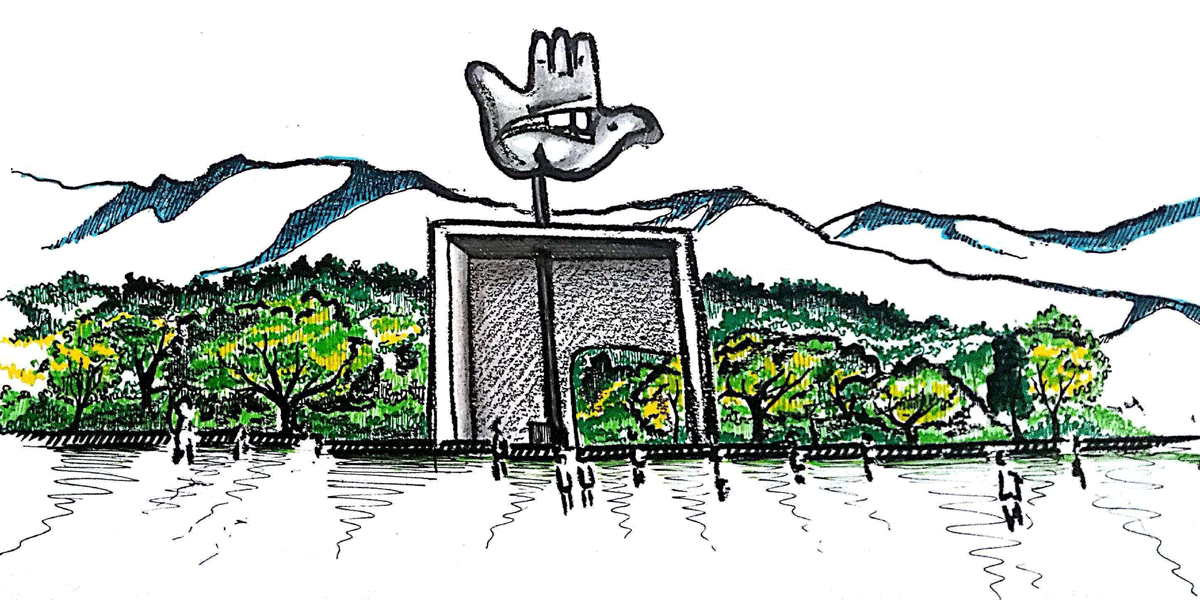Submitted by Pappal Suneja
Emphasizing the Relevance of Design Interpretation
India Architecture News - Jun 09, 2018 - 03:11 18831 views

Design Interpretation refers to the art of conveyance of the basic ideology and theme behind the development of a design form, in a rather eloquent manner.
There could be several concerns, mainly including A Sensitized Approach, Human Movement, Growth, Innovative Ideas, Influences, Implementation, Global Concerns, Healthy Development, Clarity of Thought and lastly, bridging the gap of building adaptability with the environment. The process of getting command over architectural attributes involves a long journey that shall witness quite diverse phases of perceptional thinking and satisfy the clientele. Therefore, one should be prepared well enough, not only to face temperamental choices but also to make buyer understand the thought manifestation. Architectural Journalism is the best tool for achieving the aforesaid protocols.
Design Interpretation via Architectural Journalism is not only limited to the realm of words. It is a means of expressing the thoughts put behind a design to make the observer/reader understand. It also encompasses visual interpretation of a design. Illustrations, sometimes, can enable the reader to understand the concept in a simple and effortless way.

Further, it is equally important to document the design ideas, as it not only acts as a means for Design Interpretation but also enables the designer to understand their conception better. For instance, Le Corbusier’s Open Hand Monument is a visual interpretation of the thought put behind the conception of the architecture of Chandigarh. In addition, architectural landmarks may act as visual representations of a particular place, as Sidi Saiyyed Masjid’s famous jalied pattern is the symbol of Ahmedabad city; similarly, an architectural marvel like the Empire State Building in New York, by Lamb and Harmon, is a symbol acting as a mode of representation for the city. However, the newer cities like Navi Mumbai by Charles Correa, Chandigarh by Le Corbusier, Gandhi Nagar by H. Mewada and Prakash Apte, Bhubaneswar by Otto H. Königsberger were planned from scratch for some specific purpose. The intentions like decongestion of the city, bringing out a new capital city, coming up as an adjoining satellite town etc. did always contribute to discussions by public and architectural critics, since they were about to begin a whole new era of Architectural Journalism in India.
An integral part of conceiving and understanding a design is allowing relevant knowledge and skills. One can achieve this knowledge through rigorous reading and assimilation of diverse ideas that can only be found within the confines of a library, in an attempt to enhance one’s Architectural Vocabulary. Generally, architecture students are less associated with reading and more with implementation and designing. This ideology, however, is completely wrong. Aspiring architects must read as much as they can. Working knowledge of practical aspects, as well as a strong grasp of the theories, can lead to an accurate and adequate design.

Furthermore, the most significant aspect is to go through the most celebrated books and concepts in the field of architecture, by notable architects like William Morris, John Ruskin, Thomas Hardy, Ian McHarg, Robert Venturi, Le Corbusier and Charles Correa et cetera. To name a few books that are a must-read for any future architect are Architecture Now; Design with Nature, Complexity, and Contradictory in Architecture; Towards a new Architecture; The Seven Lamps of Architecture; and A Place in the Shade.
On a concluding note, a persuasive use of words can be made to catalyze visual interpretation within the readers. Some of them could be ‘perspective’, ‘evolution’, ‘art’, ‘aesthetics’, ‘innovation’, ‘re-imagining’, ‘viewpoint’, ‘timeless thoughts’ etc.
All Images © Pappal Suneja
